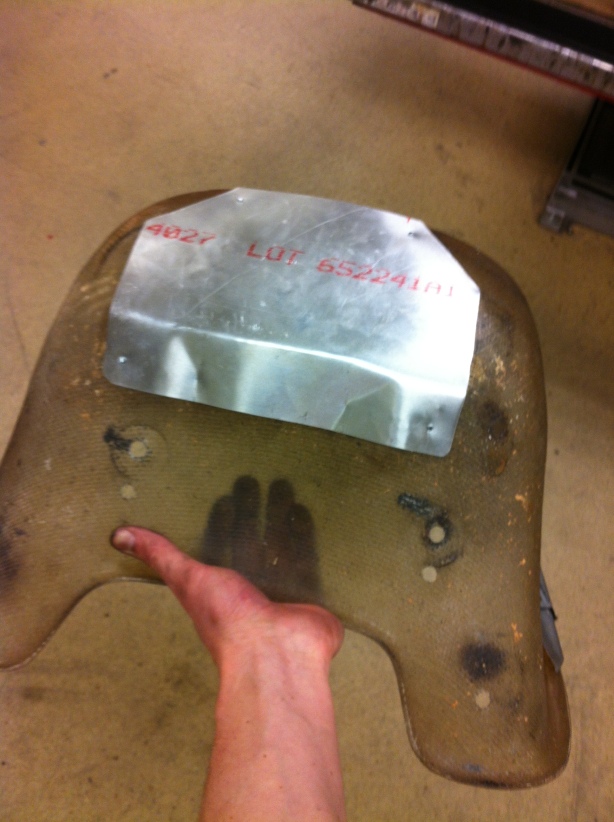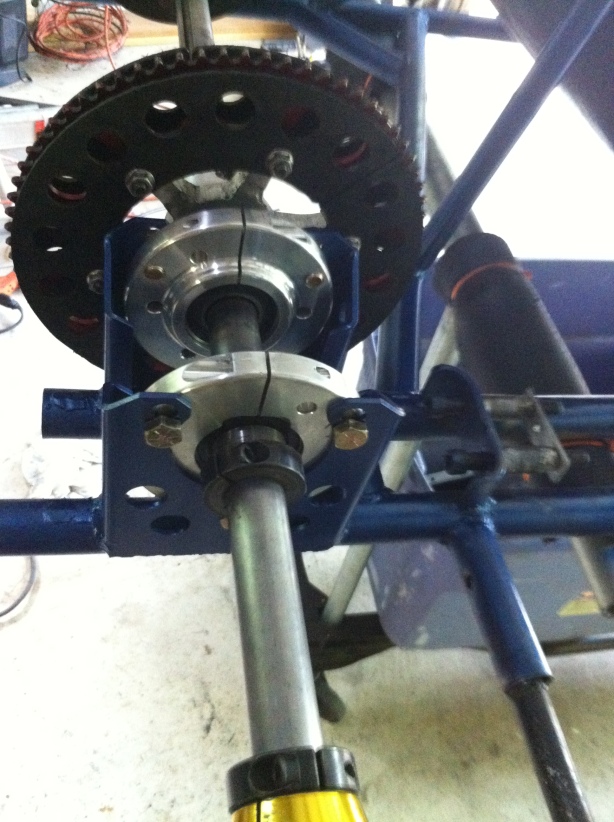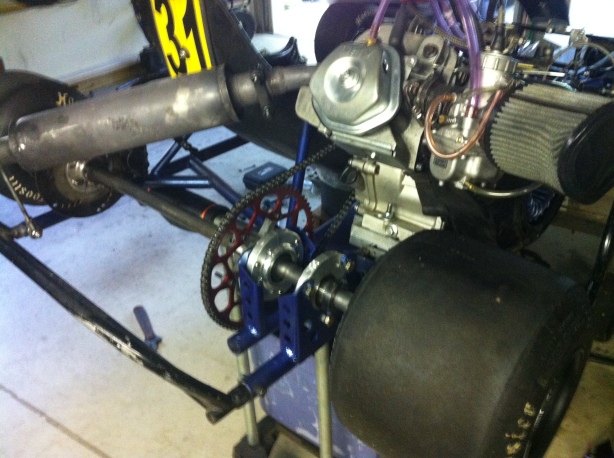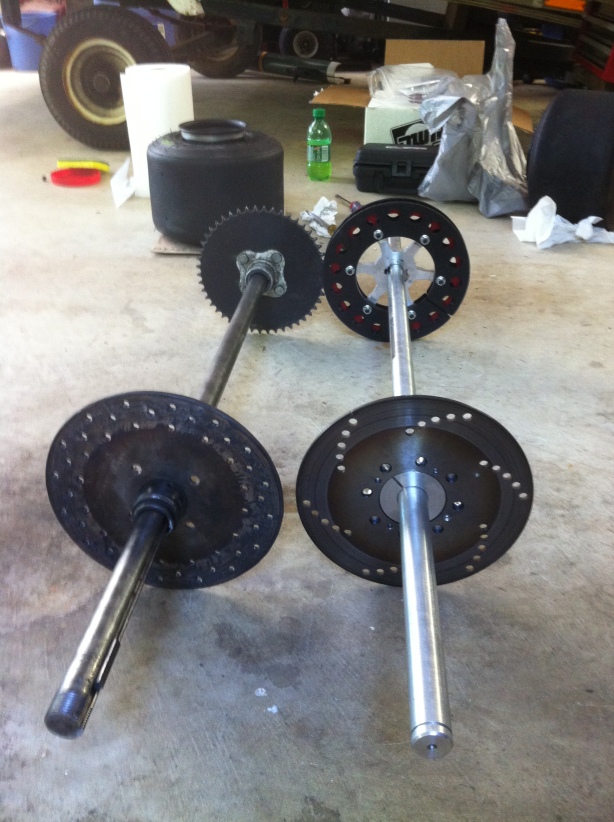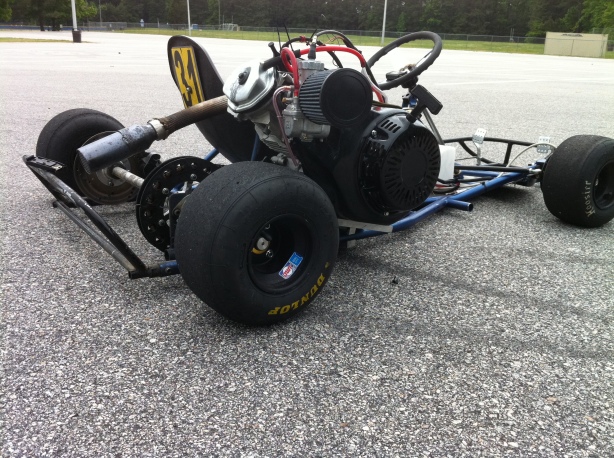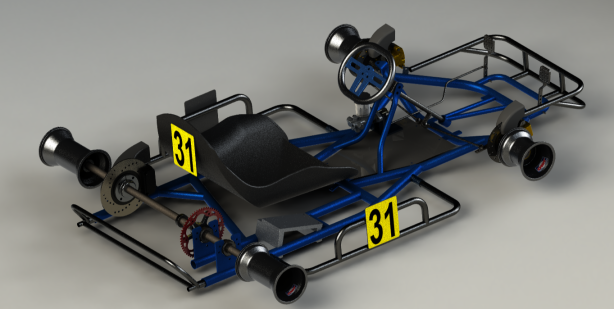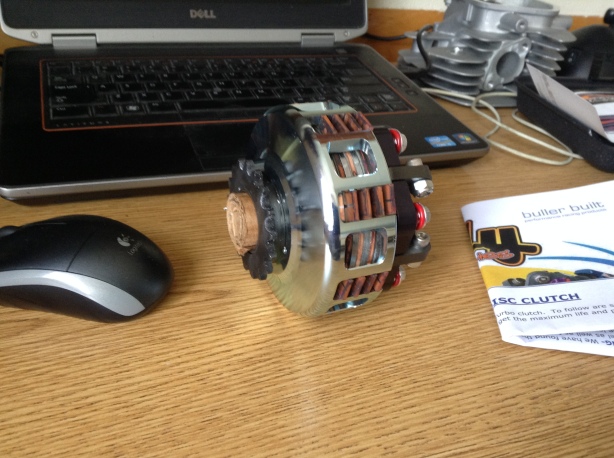I bought an extra GX390/340 cylinder head for about 25 bucks on ebay. This is a standard head with 42cc of clearance volume. Increasing the compression ratio can be done by milling the head. With this, every 0.007″ milled off the head decreased head volume by 1cc. Thus, milling 0.070″ would yield a 10cc decrease in head volume. Thus bringing the head volume to 32cc.
With the GX440 clone engines, the compression ratio is 10.0:1 stock (as advertised). This is with a 42cc head. Even though this compression ratio is high for most small engines, higher is better for greater torque and horsepower. I decided to mill this head down 0.075″ to yield a compression ratio of 12.5:1. This is the maximum compression ratio I can run with 104 octane race fuel.
You can easily find the compression ratio of your head. Check out the GX200 mods page to see a chart of already completed compression ratio combos. For this head and particular engine, the cylinder volume, or displacement is 439cc (commonly called the GX440).
So, your compression ratio equals:
(engine displacement + head volume + piston to head clearance volume)/
(head volume + piston to head clearance volume)
Your piston to head clearance volume is dependent on the height of you gasket. Basically, this value is the Bore*(distance of piston TDC to head). This is distance generally very low. usually .030″ or less. For the GX440 using a standard gasket, this value is approximately 6.78cc. So… for a quick sample calculation to find compression ratio with a head that was milled down 0.075″… first, you know that 1cc = 0.007″ skimmed off. This yields a decrease of 10.71cc. Subtract this from the stock head. The new head with 0.075″ milled off has a clearance of 31.29cc. Now, plug this value in the equation up top. You have:
(439cc + 31.29cc + 6.78cc)/(31.29cc + 6.78cc) = 12.53
12.53 is the new compression ratio. Again, this is a simple way of finding your desired compression ratio. Do some simple math to go from a compression ratio to mill height. Right below is an image of a table I made to show milling depths and associated compression ratios with octane requirements.

Now, for some pics:

This is the head ready to be milled. I had to clamp it down as best as I could. This method worked pretty well.

Picture above shows the head about to be milled. I zeroed the endmill to the head by lightly touching it. This barely skimmed any material off. Probably less than 0.001″. This endmill is a 1.750″ bit. It’s quite nice for a large head. Ideally, you would want a skimmer that takes the entire head on a pass. Well, those are expensive and rare. Only serious karting shops have these on hand.

I was able to face the entire head in 3 passes. The bit was just wide enough to do so. The fewer side-to-side passes, the better. You want to reduce the amount of milling grooves. I took off 0.010″ per pass. You want to be gentle with a bit this large. Also, a slow milling speed is a good idea (500rpm). In all, I made 8 passes. 7 initial at 0.010″ and one final, slow finish pass at 0.005″. This made a nice cut.

Done milling
Next, comes porting. Porting is basically the smoothing out of any rough edges and sharp radii in the cylinder head ports. I am still working on this… Here are a couple pics of the head polished up. 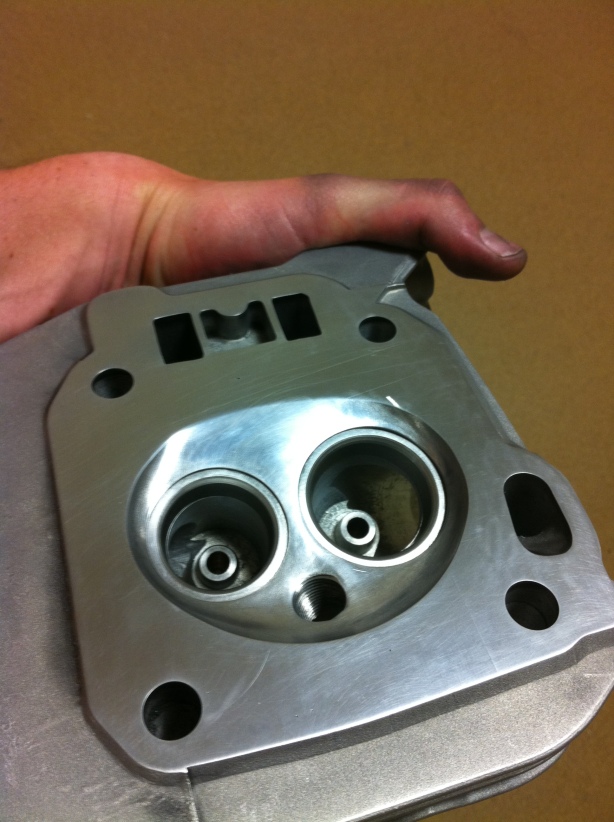
For these next 2 pictures, you can see that one port is much larger than the other. One port is the exhaust and the other is the intake. The large intake port has been enlarged and the overall radius is quite large. For the smaller exhaust port, this has not been enlarged yet. You can see the difference in sharp edges.

Unported exhaust port

Ported intake port and polished head
Polishing is the final step. As you can see, the head is quite nice. This reduces friction of the gasses in the ports and head. Also reduces carbon build up. Carbon loves to stick on cast parts due to the rough surface. This minimizes the occurrence. Plus, polishing the ports like in second to last picture reduces your head loss. Less friction means better flow.
I hope this helps those out there wanting to mill their heads down. It can be difficult to get to a mill. However, it is a huge performance mod that can be done for free. Porting is also free with the right tools and a few hours of free time and patience. I recommend porting any head for a noticeable performance boost. After my first ported GX200 head, I immediately noticed the increased acceleration and engine response.
Happy engine building!





